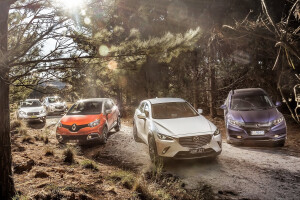Latest Review

2021 Renault Captur Intens review
Renault's baby SUV has matured, but can it be a serious contender in Australia's cut-throat crossover market?
What is the Renault Captur Intens?
This is the range-topping variant of the second-generation model of Renault’s popular crossover. Okay, when I say popular I mean in Europe, where the Captur pioneered the light SUV segment in 2013 and has since dominated it with 1.5 million sales.
In Australia, it’s been a niche seller at best, but this new model brings additional space, power, refinement and a sharper-looking athletic design that should make it more attractive to local buyers.
Priced from $28,190 before on-roads, the Captur goes on sale here in April 2021 with three variants; Life, Zen ($30,790) and the Intens that’s priced from $35,790.
All come with 113kW/270Nm 1.3-litre four-cylinder turbocharged petrol engine, which gains 22kW/60Nm over the outgoing model to be one of the most powerful in a segment dominated by smaller three-cylinder turbos as per the Ford Puma, Nissan Juke, Kia Stonic GT-Line, Toyota Yaris Cross and Volkswagen T-Cross.
The Intens stands out in the Captur range with exclusive kit, including a new 9.3-inch portrait-orientated touchscreen, 360-degree parking camera, digital instrument display and a host of other extras which we’ll go into below.
What is the Renault Captur Intens like to live with?
The new Captur is 110mm longer than the previous model, resulting in a 36mm-longer wheelbase that brings an additional 17mm rear knee room and translates to one of the roomiest cabins in its class.
The Intens comes with leather front seats that are firm but comfortable and feature stylish curved headrests, side bolstering and good under-thigh support.
The driver’s seat has power adjustments and a manual lumbar support setting and both seats are heated, as is the leather steering wheel.
The Intens is also the only Captur variant to feature the ‘flying centre console’, which juts out from under the dash to house the gear shifter and a place to plug in your phone. It appears to float over a more conventional but low-lying central compartment with the obligatory cupholders, a place to put the Renault keycard and a small tub with a sliding armrest.
The rear seats, which comfortably seat two adults, also have good under-thigh support but the fixed backrest feels a little too upright.
Taller people will be happy with the knee-room behind an average-sized driver but will find headroom a bit of a squeeze. There is no fold-down centre armrest and the middle seat will accommodate a small child at best.
The Intens also has dedicated air vents located at the back of the centre console along with two USB ports and a 12v socket.
Side vision in the back seats is a little limited as the passenger’s head is in line with the C-pillar, but it's okay when looking a little forward.
With a low rear overhang, the Captur also has one of the biggest boots in its class, which is able to fit up to 536 litres, up 81 litres from the previous model. This is mostly achieved by the forward-sliding rear seats that can increase load length by 110mm (at the expense of legroom). With the 60:40 split seats folded down, it can hold up to 1275 litres including objects up to 1.57m long.
A false floor allows you to separate items and the entire cargo area sits above a space-saver spare wheel.
The Captur Intens also comes with a nine-speaker BOSE premium audio system that has a subwoofer mounted in the boot, though Renault points out this is located behind the boot wall and doesn’t take up any space.
If you need to carry more, the Captur has roof rails to install racks and has a 1200kg braked towing capacity (660kg unbraked).
The cabin is attractive and well put together with soft surfaces on the dashboard, doors and other touchpoints. With the black leather seats, things are a little monotone but you can option two-tone black and orange leather upholstery.
The dashboard itself is dominated by the 9.3-inch portrait orientated touchscreen that pokes up above a set of simple to operate climate control dials – the Life and Zen come with a 7.0-inch landscape-orientated touchscreen
The infotainment system is quite intuitive, though it pays to play around with it for a while before driving so you’re not distracted while trying to find things. Similar to a Volvo, the interface is based around three displays that you access by swiping across. These include the digital dashboard, ‘Multi-Sense’ driving settings and phone controls. There are also tabs at the top that easily allow you to select a main menu and switch between the default Renault display and Apple CarPlay or Android Auto. It also has a 360-degree parking monitor to help you avoid obstacles.
The Multi-Sense drive modes are also exclusive to the Intens spec, comprising Normal, Sport and Eco settings that alter the engine’s rev mapping and steering accordingly and also change the display in the optional 10.25-inch digital gauge cluster to suit. There is also a customisable My Sense mode that lets you change either feature independent of the others.
All exterior lighting is LED, with the Intens adding brighter headlights and tail-lights with a fancy animation sequence when you start the car at night.
Other features exclusive to this priciest Captur include an auto-dimming rear-view mirror, satellite navigation, privacy glass, exterior chrome highlights, 18-inch alloy wheels over the standard 17s. One notable omission for the price is adaptive cruise control, which is a $500 extra and has a stop-and-go function for operating in heavy traffic.
The 10.25-inch digital driver’s display is also optional and only available if you spend an extra $2000 on the Easy Life Package that also brings hands-free parking, side parking sensors, automatic high-beam and a frameless auto-dimming rearview mirror.
Along with the Atacama Orange metallic paint ($650) this pushed the retail price of our test vehicle to $38,440.
Operating costs after you’ve forked out that money are reasonable. The Captur has an official combined fuel economy of 6.6L/100km, which was about on par with my real-world driving, but it only drinks more expensive RON 95 or RON 98 premium unleaded.
Service intervals are 30,000km or 12 months, whichever comes first, with the first three scheduled services priced at $399, the fourth at $789 and the fifth at $399.
The Renault Captur is covered by a five-year, unlimited-kilometre warranty.
What is the Renault Captur Intens like to drive?
Small crossovers are coming into their own now, newer models being built on platforms designed with high-riding SUVs in mind. The Captur is no exception. Unlike the Koleos and the discontinued Kadjar that respectively share underpinnings with the outgoing Nissan X-Trail and Qashqai, the Captur is the first Renault SUV to be built on the new Common Module Family, B-Segment (CMF-B) platform that also underpins the latest Nissan Juke.
As well as providing additional space, the CMF-B is lighter and tauter than the old chassis, which, along with wider front and rear tracks, brings noticeable improvements to ride and handling.
A chunky leather steering wheel feels well connected to the front wheels. It's nice and light and stiffens a little when selecting the Sport driving mode.
The Captur is nimble around town and cruises nicely on freeways and felt surprisingly stable on rough country roads, including gravel, helped by the 18-inch Continental Premium Contact 6 tyres that feel grippy on all surfaces.
Its suspension provides a good compromise between ride and handling on most surfaces. While I didn’t seek to test the Captur as a country cruiser I actually enjoyed driving it in the bush, including on bendy roads where body roll was well contained.
The 113kW/270Nm 1.3-litre four-cylinder turbocharged TCe 155 engine, co-developed with Mercedes-Benz and found in the A-Class, is a gutsy little thing and cruises along effortlessly at higher speeds where there’s always a bit of additional power on tap.
However, as with the Mercedes-Benz A180, it exhibits quite a bit of lag through the dual-clutch automatic transmission, which is evident across the rev range not least from a standing start.
This can be a little unnerving if, say, trying to beat another car through a roundabout. That lag is lessened a little in Sport mode, which lets you reach peak power and torque quicker.
That said, when the Newtons finally do kick in, the Captur is prone to a little torque steer, particularly if the front wheels aren’t pointing straight. If you’re not ready for it, it will want to lurch in the direction they are pointing and this can also make entering a roundabout interesting.
You do learn to manage all that though, and once you’re through the lag the engine always seems to have enough power on tap for over taking even at higher speeds. Here, the dual-clutch auto comes into its own on the move and shifts up and down the gears seamlessly.
The Captur is a reasonably quiet car, with cabin noise claimed to have reduced by 2dB compared to its predecessor, though tyre noise is a little high on coarser surfaces.
In short, the Captur offers an enjoyable and comfortable driving experience on all roads that and kind of makes up for Renault’s decision to virtually do away with its hatchbacks in Australia.
How safe is the Renault Captur Intens?
The Captur was awarded a five-star EuroNCAP in 2019, with testing used to gain a five-star ANCAP rating, due in part to its autonomous emergency braking with pedestrian and cyclist protection.
Other standard safety and driver-assist features include lane departure warning, lane keep assist and traffic sign recognition. The Zen and Intens versions also feature blind-spot warning and rear-cross traffic alert though, as mentioned above, adaptive cruise control is an extra cost option in the Intens and the mid-spec Zen. All versions come with standard cruise control including a speed limiter.
The Captur has six airbags; driver and passenger front, driver and passenger side and front and rear curtain inflators.
Rear outboard seats have ISOFIX child seat anchors and there are three tether points.
The Verdict
The Renault Captur is one of the more handsome light SUVs on the market, which will certainly add to its appeal along with its driveability.
If you like what you see and can afford to, I suggest going all the way with this Intens spec with the Easy Life package whose 10.25-inch digital driver display adds to the premium Euro feel that helps sets it apart from some of its rivals.
That said, some of those rivals such as the Ford Puma do come with more kit for the price while also being fun drives, but the top-flight Captur has all the important stuff including an excellent infotainment system while also being a little more practical.
I’d add that it also offers the chance to be a little unique, but I reckon you’ll be seeing a lot more of these on Australian roads than you did the first-generation model.
Score 7.5/10
Plus Looks great; efficient engine; space and comfort; infotainment system
Minus Engine lag; lacks some standard features found in rivals
Renault Captur Intens specifications
Body: 5-door, 5-seat SUV
Drive: FWD
Engine: 1332cc 4-cyl, 16v turbo
Power: 113kW @ 5500rpm
Torque: 270Nm @ 1800rpm
0-100km/h: 8.6sec (claimed)
Fuel consumption: 6.6L/100km (combined)
Weight: 1381kg
Power/weight: 89.3w/kg
Transmission: 7-speed DCT
Suspension: MacPherson strut/Torsion beam axle
L/W/H: 4227/1797/1576mm
Wheelbase: 2639mm
Tracks: 1560/1547mm
Brakes: Front vented discs (280mm) / Rear drums (229mm)
Tyres: 215/55 R18 Continental Premium Contact 6
Price: From $35,790 ($38,440 as tested)
News
-
 News
NewsRenault Australia announces upcoming price increase, effective July 1
The rise will be Renault's second in less than six months
-
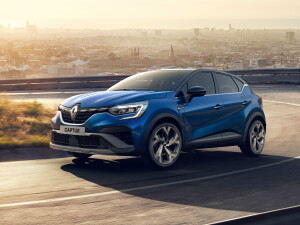 News
News2022 Renault Captur: R.S. Line pricing and features for Australia
R.S. Line upgrades join the Captur after being rolled out for Arkana
-
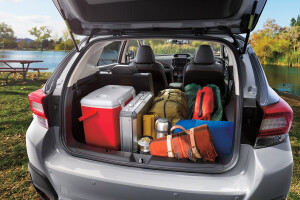 Advice
AdviceBoot sizes of Australia’s favourite SUVs
Not all SUVs are created equal when it comes to the cargo department
-
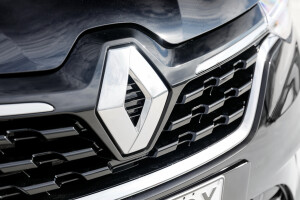 News
News2022 Renault prices increase across model range
The changes will come into effect from March 1, 2022
-
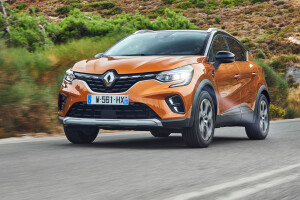
2021 Renault Captur pricing and features
-
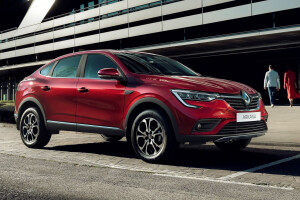
Renault moves closer to all-SUV line up for Australia
-
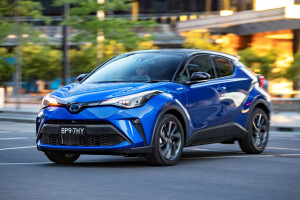
The most fuel efficient small SUVs you can buy right now
-
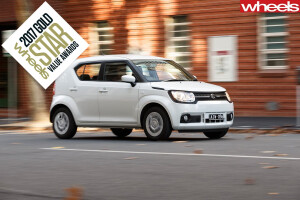
Small SUV: Australia's best value cars 2017





